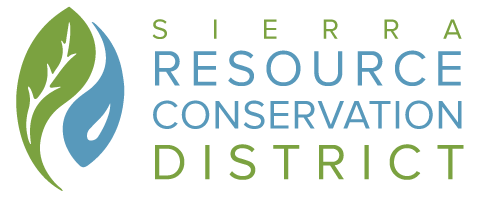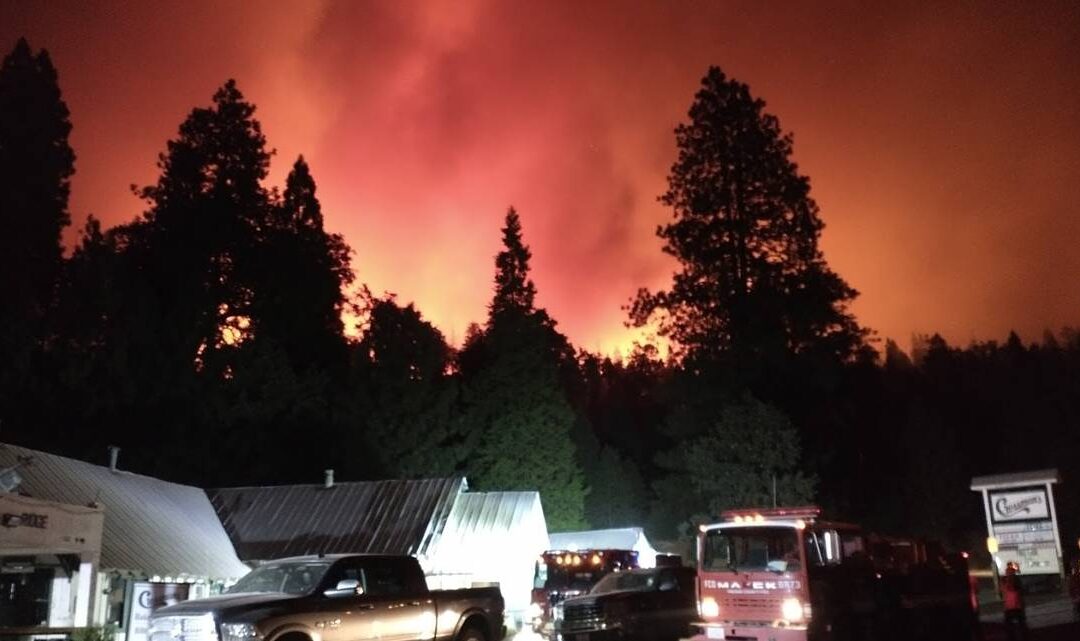Opinion Article in the Fresno Bee by the 168 FireSafe Council President Howard Hendrix. Howard was one of many landowners who were focused on being a great property steward with fire prevention as priority. He is currently still working in partnership with Sierra RCD, as the District develops a Post- Creek Fire recovery program.
https://www.fresnobee.com/opinion/readers-opinion/article246105910.html
Due to the ferocity of the Creek Fire, my wife Laurel and I are now displaced persons — first to a motel for two weeks, now to an apartment in Fresno.
On Sunday, Sept. 6, we were ordered to evacuate from our house in the Pine Ridge community, just south of Shaver Lake. We were out by 1 in the afternoon, leaving behind our home amid its 12 acres of pine, oak, and cedar forest — at that time all still properly green.
Sunday through Monday we heard conflicting reports regarding fire behavior. We rode a mad roller-coaster between high hopes that the fire would spare the home we had built and lived in for 15 years, and grave fears that our place would burn down to ashes, rubble, stem wall, and slab.
On Tuesday, Sept. 8, we learned that the much-feared latter possibility had in fact come to pass. Our house was no more. Despite the herculean efforts of Cal Fire, the U.S. Forest Service, Cal OES, local volunteer fire departments, and myriad other agencies, roughly three-quarters of the homes and structures in our unique and much-loved community were destroyed when an avalanche of flame — 100-to-200-foot flame-lengths, 50 to 60 mph winds — poured through the forest of Pine Ridge overnight, Monday into Tuesday.
We take solace in the fact that we had ample time for evacuation and everyone in our tract got out unhurt. Laurel and I still have each other, our important documents, our old dog and young cats. Our regrets are also eased somewhat by the fact that in our community we had done all we were supposed to do, and more. With help from the Highway 168 Fire Safe Council and Cal Fire, we had over the previous 20 years put in shaded fuel breaks, taken down standing dead trees and, with help from the Sierra Resource Conservation District, had begun removing the remaining log decks of those dead trees.
Our community prided itself on its long tradition of effort aimed at reducing and mitigating fire hazards. We knew there was a risk to our living in the mountains, and we took many steps to lessen that risk. Yet the Creek Fire was so extreme that it overwhelmed all our defenses.
Perhaps in the back of our minds we believed that the wildfires we knew were coming would somehow always be someone else’s catastrophe, not our own. Even when Laurel and I were evacuating from our neighborhood, we assumed that our place would be safe and we would be able to return to our home and our normal life. Instead we have suffered loss upon loss and are sick at heart over what has happened.
In our case, insurance has helped a great deal, but it can never replace all that was lost. The particular things our house held within it are too numerous to describe here, and perhaps only insurance adjusters would want that description in minute detail. Outside the house, our old pickup truck, wood splitter, tool shed, well house, and wood shed — with its cords of summer’s split logs that would not wait for winter and woodstove to burst into flame — are all in ashes or melted metal.
The fire expelled us from the mountains into the Valley, where the pressures and necessities of masking up and dealing with COVID-19 are much more in our faces than was the case in our small rural community. Nonetheless, beyond questions of beetle-killed trees, forest management issues, overstretched firefighting resources, drought and climate change writ large, the Creek Fire is, like the coronavirus pandemic, distinctly a “wildland urban interface” problem, in firefighter parlance.
Our wildfires and pandemics are, paradoxically, driven by our success as a species — by the pressure our ever-growing human population puts on wild environments, not only by proximity and intermixing, but also by the exchanging of less-obvious properties (viral RNA and carbon footprint, say) between the “natural” and the “technological” spheres. By living in the interface, we were part of the problem — and all the world is, ultimately, in the interface.
We cannot truthfully say “We have lost everything” so long as we are still around to say those words. In that lies the hope that we still have time to learn, and to change.
Howard V. Hendrix is president of the Highway 168 FireSafe Council, president of the Pine Ridge Property Owners Association and a longtime firefighter with the Pine Ridge Volunteer Fire Department. Formerly a homeowner on Lower Cressman Road, he and his wife now live in a Fresno apartment.


Recent Comments